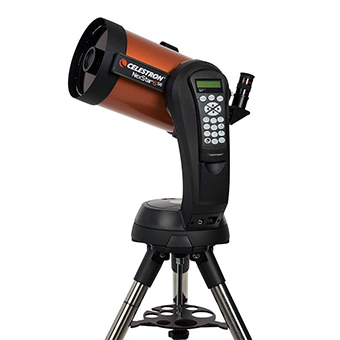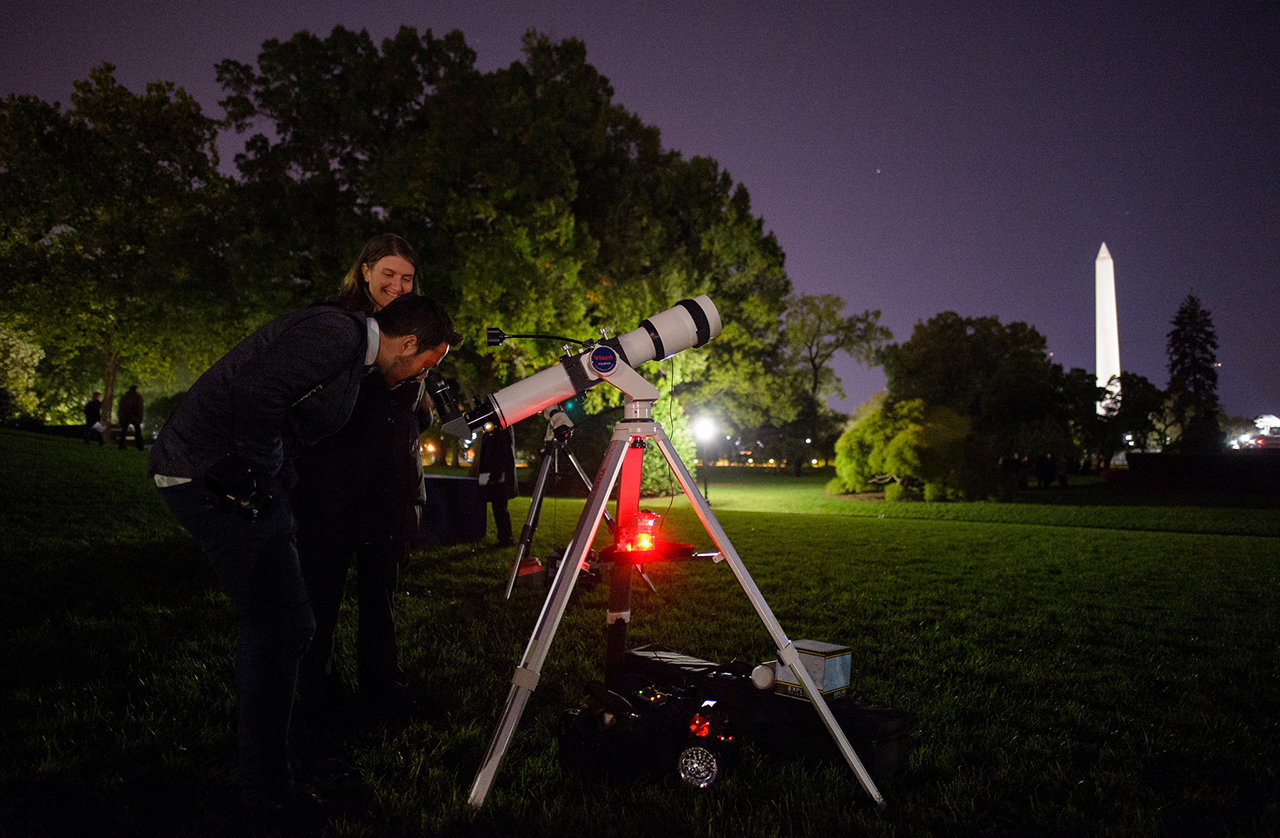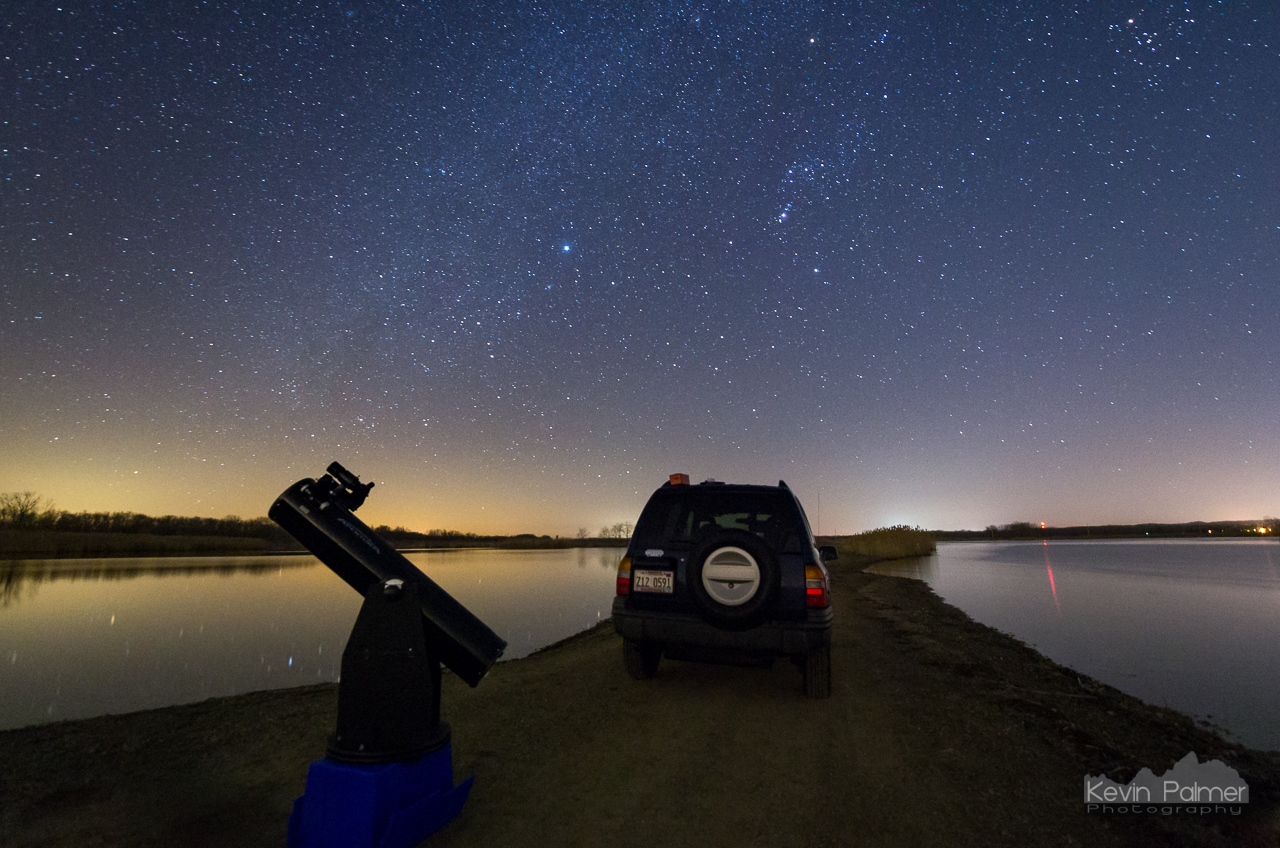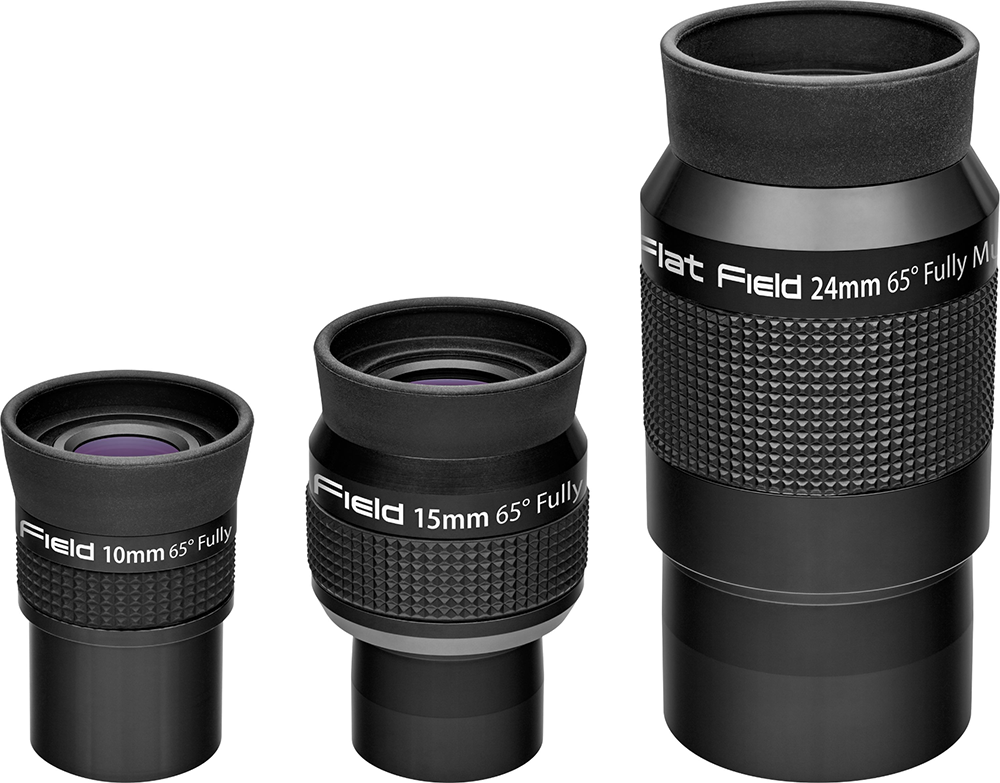If you are new to astronomy and trying to pick out a telescope it may be confusing at first. In this post I try to explain some of the terms used and what to look for. Hopefully this will help you make an informed decision so you can get the best possible views of space.
Aperture and Focal Length
The most important feature of a telescope is it’s aperture, which is the diameter of the light-gathering lens or mirror. The bigger the aperture, the more light it will collect, which allows you to see fainter objects. Apertures in mass-produced telescopes can vary from 2 inches to 20 inches. It’s often expressed in millimeters, so you may need to convert between the two. Usually the advice is to buy the biggest aperture telescope you can afford, but there are other considerations as well such as portability and ease of use. Focal length is the distance between a telescope’s primary optics and the image it creates. A longer focal length is more suited for observing planets, while a shorter focal length is better for wide field views of space. The focal ratio (f/5.9 for example) is the ratio between the aperture and the focal length. Multiply the aperture by the f ratio to find the focal length.
Types of Telescopes
A refractor telescope – NASA
There are 3 main types of telescopes:
- Refractors
This is the classic design that most people picture when they think of a telescope. Light enters through a lens at the top of the telescope before bouncing off a diagonal mirror at the bottom to the eyepiece. Smaller aperture refractors can be found for a low price, but larger aperture designs quickly become very expensive. All else being equal, the same aperture will collect more light in a refractor than other telescope designs because there are no obstructions in the light path. - Reflectors
A reflector telescope contains a large concave mirror at the bottom of a tube which bounces light toward a secondary mirror at the top and then to the eyepiece. Larger reflectors may use an open truss design instead of a tube to save weight. A reflector is one of the most cost-effective designs that allows you to get the most aperture for your money. This is especially true if used with a dobsonian base. - Compound
A compound (or catadioptric) telescope is made with a combination of mirrors and lenses. It is the most complex type, but this usually results in a more compact and lightweight design compared to the others.
 A wide variety of telescopes is seen at the Grand Canyon star party. – NPS
A wide variety of telescopes is seen at the Grand Canyon star party. – NPS
Types of Mounts
The mount is a very important part of the telescope. It doesn’t matter if you have the sharpest telescope, if you place it on a shaky mount it will be unusable. Some types of telescopes are better suited for a particular type of mount. There are 4 main types.
My own telescope is an 8″ dobsonian reflector.
- Alt-azimith
Alt-azimuth mounts are the simplest type of mount, and they are similar to a camera tripod. They allow you to move the telescope up and down and side to side. But it can be difficult to track the stars and make precise adjustments. For this reason they are mainly suited for smaller, low-power telescopes. They are not ideal for astrophotography. - Dobsonian
The dobsonian is a variation of the alt-az mount, designed for reflectors. Instead of using tripod legs, it uses a heavy base that is often made of wood. This is a stable design that doesn’t cost a lot and allows for more precise movements. But it is not ideal for astrophotography. - Equatorial
An equatorial mount requires you to align it with the North Star (or southern celestial pole in the southern hemisphere). But once you do it will be very easy to track the motion of the stars and counteract Earth’s rotation. This tracking may be manual or it may be motorized. A counterweight is required to balance out the telescope. An equatorial mount is generally the best type for astrophotography. - Fork
A fork mount is designed for shorter tube telescopes (usually the compound type). They are motorized and do not require a counterweight since the telescope is balanced at it’s center of mass. But they are often heavier than other types of mounts.
A telescope on a motorized equatorial mount. – BLM
Eyepieces
The eyepiece determines the magnification of the view through your telescope. Divide the focal length of your telescope by the focal length of the eyepiece to find the magnification. Eyepieces come in focal lengths ranging from 2mm to 56mm. The highest useful magnification for a telescope is about twice the aperture size in mm. For example a telescope with a 150mm aperture is limited to a 300x magnification before the view will become too blurry. But this also depends on your atmospheric conditions while observing and on the quality of your optics.
Eyepieces come in 2 sizes: 1.25 inches and 2 inches. A 2″ eyepiece requires a 2″ focuser but a 1.25″ eyepiece is more versatile. It’s usually the higher end eyepieces that come in the 2″ size and they tend to be heavier and more expensive. There are many different types of eyepieces, but what often sets them apart is the angular field of view (AFOV). The AFOV can vary from 30° to 120°. A wider field of view can make it seem like you’re looking out of a window into space instead of through a narrow hole. But I recommend not worrying about eyepieces until you’ve used your telescope a few times and become familiar with the ones that it came with.
A barlow lens can be used to extend the magnification of eyepieces you already have. A focal reducer has the opposite effect and gives you a wider view.
This Telescope Calculator can help you determine magnification and other factors.
Other Features
Finder
A finder scope is like a mini telescope that’s attached to the bigger telescope. It provides a wider field of view to assist you in finding objects. There are also simpler finders that don’t use any magnification such as the Telrad. Both types often use a red light and must be aligned to the scope the first time you use it.
Computerization
A computerized or “go-to” telescope takes the guesswork out of finding astronomical objects. Type in what you want to see and it will automatically point the scope there. But the downside is that setup can take quite awhile as it has to be aligned before each use. They are also more expensive. A go-to telescope takes the challenge out of stargazing, and as a result you won’t learn the night sky as well as you would finding things yourself.
I hope you find this information helpful as you pick out your first telescope. Below are a few of my favorite telescopes.
Orion SkyQuest XT8 Classic Dobsonian Telescope
This telescope is very similar to the one I use myself. 8 inches is a decent-sized aperture in my opinion that will show you a lot without weighing too much. But you may also want to look at the XT6 or XT10.
Orion BX90 EQ 90mm Equatorial Refractor Telescope
This is a good-sized, inexpensive, refractor that’s not too bulky. It comes on an equatorial mount with the option to add a tracking motor.
Celestron Nexstar 6SE
The Nexstar is a great option for a compact, computerized telescope. The long focal length makes it great for observing planets. Also check out the 4SE and the 8SE.





